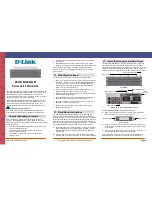
CHAPTER 9 International Languages and Character Sets
339
•
If the code page on your client machine operating system matches that
used in the database, no character set translation is needed for data in the
database.
For example, in many environments it is appropriate to use the
1252LATIN1 collation in your database, which corresponds to the
Windows NT code page in many single-byte environments.
•
If you are able to use a version of Adaptive Server IQ built for your
language, and if you use the code page on your operating system, no
character set translation is needed for database messages. The character set
used in the Adaptive Server IQ message strings is as follows:
Also, recall that client/server character set translation takes place only if the
database server is started using the
-ct
command-line switch.
Collation internals
This section describes internal technical details of collations, including the file
format of collation files.
This section is of particular use if you want to create a database using a custom
collation. For information on the steps involved, see “Creating a custom
collation” on page 349 and “Creating a database with a custom collation” on
page 351.
You can create a database using a collation different from the supplied
collations. This section describes how to build databases using such a custom
collation.
In building multibyte custom collations, you can specify which ranges of
values for the first byte signify single- and double-byte (or more) characters,
and which specify space, alpha, and digit characters. However, all first bytes of
value less than \x40 must be single-byte characters, and no follow bytes may
have values less than \x40. This restriction is satisfied by all supported
encodings.
Language
Character set
English
1252LATIN1
French
1252LATIN1
German
1252LATIN1
Japanese
SJIS2
Summary of Contents for Adaptive Server IQ 12.4.2
Page 1: ...Administration and Performance Guide Adaptive Server IQ 12 4 2 ...
Page 16: ...xvi ...
Page 20: ...Related documents xx ...
Page 40: ...Compatibility with earlier versions 20 ...
Page 118: ...Troubleshooting startup shutdown and connections 98 ...
Page 248: ...Importing data by replication 228 ...
Page 306: ...Integrity rules in the system tables 286 ...
Page 334: ...Cursors in transactions 314 ...
Page 396: ...Users and permissions in the system tables 376 ...
Page 438: ...Determining your data backup and recovery strategy 418 ...
Page 484: ...Network performance 464 ...
Page 500: ...System utilities to monitor CPU use 480 ...
Page 514: ...Characteristics of Open Client and jConnect connections 494 ...
Page 536: ...Index 516 ...
















































